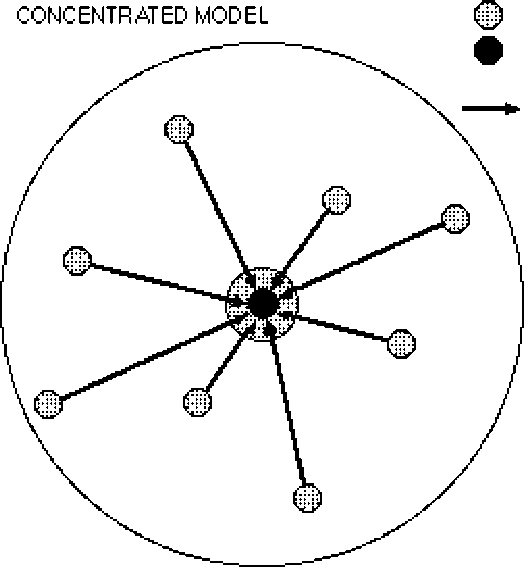3.
Model of fully concentrated employment
This section elaborates the basic monocentric model with employment concentrated in one
location. Figure 2 shows the direction of commuter flows as presupposed by this model.
Figure 2 Commuter flows in the model of fully concentrated employment

Place cf living
Place cf work
Distance and direction
of commuting ioo.
concentration
The method for calculating commuter distances on the assumption of fully concentrated
employment is a variation on Hamilton (1982). The model predicts the residential location
assuming exogeneous employment location. In brief, the method consists of three steps. In
the first step the maximum commuter distance of the four urban regions is determined. This is
the distance between the edge of the urban region and its centre. Next the potential
population density function is determined. By substituting this density function into an
integral equation the average commuting distance for each of the urban regions is calculated in
a third step. Although to some readers the concepts used in the various steps may be familiar,
we elaborate them in some detail because they will be used throughout the rest of the article.
The maximum commuting distance for each of the urban regions
More intriguing information
1. The name is absent2. If our brains were simple, we would be too simple to understand them.
3. The name is absent
4. The Trade Effects of MERCOSUR and The Andean Community on U.S. Cotton Exports to CBI countries
5. The name is absent
6. The name is absent
7. Accurate and robust image superresolution by neural processing of local image representations
8. The name is absent
9. A simple enquiry on heterogeneous lending rates and lending behaviour
10. THE WELFARE EFFECTS OF CONSUMING A CANCER PREVENTION DIET